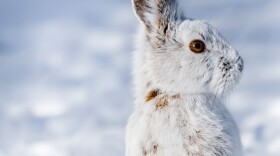Earthworms use their entire body to breathe. Burrowed deep in the ground — slow moving, slow metabolizing — their long frames tighten and relax and pull the air they need from soil. When it rains, there is arguably not enough oxygen available in their buried habitats, so the worms surface to avoid suffocating. It’s why so many rainy day walks are accompanied by earthworms. And for me, these walks also invite my children. All spring-born babes, arriving when the soil floods and earthworms line the trails, including the pathways of those crucial walks to pacify restless newborns and a restless new momma.
Perhaps it’s peculiar then that an earthworm must stay wet to breathe. Lacking lungs, its skin takes in oxygen and releases carbon dioxide in a process called diffusion. For this molecular exchange of gasses to occur, a worm dons a constant coat of slimy, dewy mucous. Without this moisture, it will choke and die. Some scientists question if worms can absorb the oxygen they need directly from water as well — and have proposed that their migration to the surface during a heavy rain is actually the result of something else. Perhaps the raindrops mimic the sound of the worms’ greatest predator, instinctively inducing a flight to the surface for survival.
You can find birds taking advantage of this theory, using this frightening familiar quiver performed through a type of tap dance to trick worms away from fabricated dangers below and into the beaks of very real ones above. This kind of worm charming isn’t limited to birds: humans also skillfully play the soil to expose hidden worms and enchant them into jeopardy.
My sisters and I didn’t know this clever song and dance when we were young and charged with finding earthworms to feed to the compost, so that in turn the compost could feed the worms – both essential in fueling the vast vegetable garden my parents cultivated in our backyard. It was a suburban farmstead, where I learned about soil health and crop rotation and how to tiptoe around the Killdeer nest in the rocks that lined the strawberry patches. Where the woodchuck living in our woodpile would stand on its hind legs and gnaw the almost-ripe apples on the low-hanging branches — leaving their core corpses behind as a gift to the wasps and bees.
In an artful act of symmetry, earthworms too use their entire body to help gardens, to help soil, breathe. Shortening and stretching their muscles, the worms slowly push and carve complex trails of underground burrows, weaving together a series of tunnels to create a pulmonary circuit of their own design: a body of veins pulsing both breath and nutrients throughout the soil.
Many of the earthworm species found in North America today are invasive, arriving with early European settlers. An invasive species myself, I cannot help but share feelings of empathy and culpability. The occupation of this influential invertebrate is reshaping ecosystems by altering core soil compounds — changing the path and the pace that water flows and erodes the soil, the way the forest floor decomposes organic matter, how it stores and releases carbon into the atmosphere. How our very Earth takes a breath.
But for me the full depth of earthworms’ curiosities and capabilities lives in other places. Like the fish cleaning shed on the shore of Trout Lake where my dad taught me how to scale and gut the bass I caught off the dock. An act both violent and delicate, the floor of the shed covered in glittering scales, like a resting snow globe. The earthworm bait bought with my own prized pocket-change from the local gas station en route to the lake — sold in a styrofoam container with punctured air holes to allow in plenty of oxygen. Kept chilled in the cooler next to cans of 7 Up and bagged cheese sandwiches.
And it lives in those backyard gardens and watery walks with my children before they had learned to walk themselves. Then suddenly toddlers, then teenagers, one now an adult, married just a month ago. But still, I have plenty of rainy day strolls and endless moments like these. Resurfacing too like an earthworm. Knowing instinctively when just such a deep full-body breath is needed.
Today’s Field Note was written in the Field Notes Writing Workshop at the Montana Natural History Center. This is Beth Conway for Field Notes, brought to you by the Montana Natural History Center, providing natural history education for schools and the public throughout Montana. To find out about upcoming events and programs at the Center, call 406.327.0405, or visit our website at MontanaNaturalist.org.





